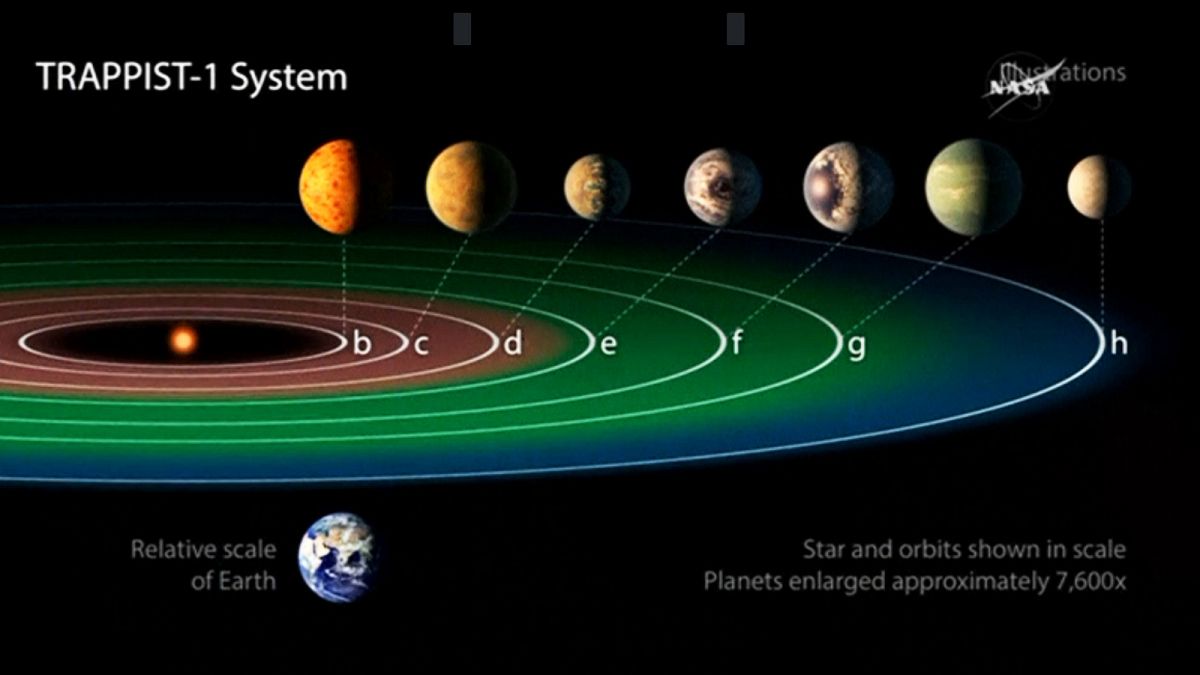NASA announced the discovery of seven planets that could host life like on Earth.
NASA announced the discovery of seven planets that could host life like on Earth. In case you’re not yet convinced, here’s four reasons why this discovery is so exciting.
It’s the first time that we’ve found so many Earth-sized planets orbiting around a star
The Trappist-1 system is a groundbreaking discovery. Never before have scientists found as many earth-like planets orbiting around a single star, what could be compared to a mini version of our solar system.
What’s really curious about this discovery is that, out of all the stars known, Trappist-1 is considered to be a small star. For an idea of scale, it’s merely the size of Jupiter. This means that finding not 1 or 2 but SEVEN planets orbiting around it was quite a shock. “It was completely unexpected”, says Professor Brice-Olivier Demory at Switzerland’s University of Bern and one of the key scientists in this research. “Trappist-1 is only 8% the size of our Sun, so it’s really, really small. We don’t understand how a small star like that managed to form so many planets”.
They are a promising target to search for extra-terrestrial life
A combination of factors make these planets favorable objects of study in the search for life in outer space.
Firstly, the Trappist-1 system is super close, just 39 light years away. In space terms, that is not much. As a reference, the most distant object the Hubble telescope has ever found was 13.4 billion light years away! This means that it should be fairly easy to observe it with space and ground telescopes.
Secondly, at least three of these planets are in the “habitable zone”, meaning they are located at a distance from their star that means liquid water could be present on their surface. And water is the key to life as we know it.
Although the presence of liquid water has not yet been confirmed, scientists explained that the planets are likely to have clouds in their atmospheres. Prof Demory explains how they came to this: “We were very surprised recently because every time we tried to observe these planets with Hubble, we only detected flat spectra. We think it could be the presence of clouds, hiding the spectral signature. Like Earth, it’s quite likely that clouds form in these planets”.
It’s just the beginning of many discoveries yet to come
Scientists are still missing information on the components of the planets’ atmosphere but that is bound to change with the upcoming team of bigger and better telescopes.
The James Webb Space Telescope, scheduled to launch in October 2018, and three new ground-based telescopes, the European Extremely Large Telescope (E-ELT), the Giant Magellan Telescope (GMT) and the Thirty Meter Telescope (TMT), will together form an elite squad of telescopes.
The Trappist-1 system is already a priority and scientists like Prof Demory don’t hide their expectations for the near future: “We hope to be able to probe these planets’ atmosphere and look for ozone, oxygen, water, carbon dioxide, elements that are present in Earth’s atmosphere, so we are all very excited”.
Adding to this, Trappist-1 is not the only promising star system out there. “About 15 percent of the stars in our neighbourhood are very cool stars like Trappist-1,” says Prof. Demory. “We have a list of about 600 targets that we will observe in the future”.
These planets should look awesome
Much expectation is being built around what these planets actually look like and the predictions made are very exciting. The planets in the Trappist-1 system orbit very close to each other, meaning that when standing on one of them you could see the others soaring in the skyline, appearing twice as big as the Moon seen from Earth. Due to their proximity these planets are what is known as ‘tidally locked’, meaning that one side of the planet is in daylight and the other is in permanent darkness. On the ‘bright’ side, you’d be able to see the salmon-pink star shining and reflecting on the rock surface. On the fifth planet of this system, the Trappist-1 star would appear up in the sky ten times bigger than our Sun.
